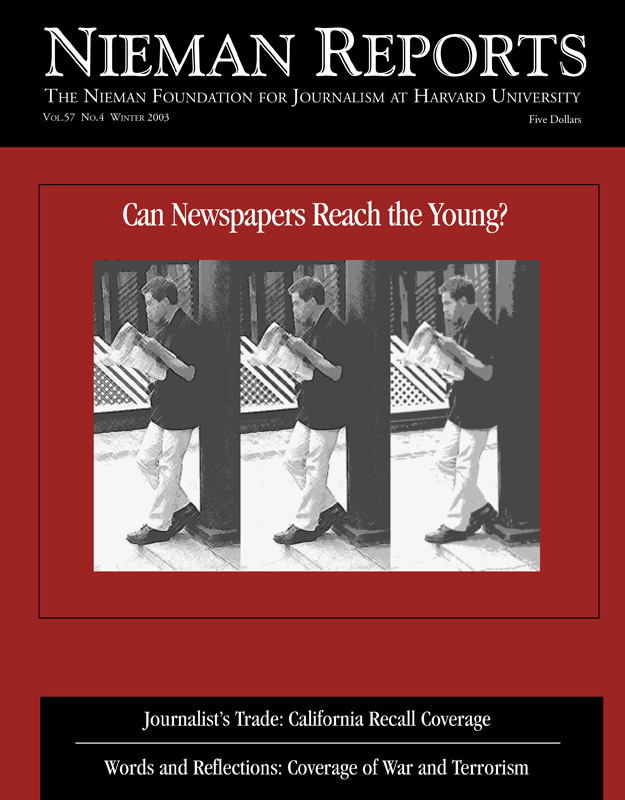The following excerpt is from a longer piece, “Seeing Devastation Through a Child’s Eyes,” written by Kayla Conklin and published in Voices in April 2003. Conklin is a former Voices’ intern who is now in her first year at Temple University in Philadelphia.
Gia drew a picture in crayon. No smiling sun with sunglasses shone upon multicolored flowers and a village of little pink houses, all identical to one another. Gia didn’t see that very much. From the barracks where she spent her days, little light was visible, except through cracks in the poorly constructed cabin.
So Gia drew what she knew: open-top trains, carrying dead bodies with X’s for eyes away from a gas chamber. She was born more than 60 years ago, and she shares my birthday. She suffered through something I can’t begin to fathom, and that’s all I know about Gia, except that she had the amazing strength to survive. This faceless little girl has become my new hero.
On March 13, my Governor Mifflin High School class spent three hours in the United States Holocaust Memorial Museum in Washington, D.C., on its senior trip. We were free to wander the corridors and peruse the museum’s overload of information, both visual and emotional. …
Finally, I proceeded to the children’s area. As a playground leader and aspiring teacher, I love children and admire their innocence and unaffectedness. A movie was playing in a small theater, in which a father was telling a story about his son. His father knew that his family would be taken, so he tried to leave his son where the son would be safe. The child steadfastly refused to comply with his father. As the father recalls, the child asked him later, “What does it mean to be Jewish? Why am I here?”
Such remarks, from a child yet unaware of the fact that anyone was different from anyone else, broke my heart. An estimated 1.5 million children died in the Holocaust, their potentials unfulfilled. The next Einstein, Kafka or Wagner could have been among that group; when one considers all of the theories left unthought, the canvases left blank, the words never written and symphonies never composed, the weight of what was lost seems worse than what was done.
I walked to a wall, considering this, and stared at pictures: Stars of David, concentration camp barracks and other things that children, in an attempt at therapy, depicted on 8.5 inch by 11 inch paper with colored pencils, markers and watercolors. I scanned over names and birthdays and paused at a picture of a crayon train, carrying bodies away, and underneath it, only Gia’s name, and August 27, the day I was born.
Two short lines of text and her crayon picture are all I know of Gia, but the entity of her existence and the gravity of her experience will stay with me forever. I’ve never seen the horror that Gia had, and most haven’t, but there’s truth in the statement that history must be understood and remembered, lest it repeat itself. If we reject silence in favor of speaking up, if we refuse to hate even in the face of evil, and if we remember that every person born in the world is equal and that nothing can alter this fact, we can honor the victims’ memories daily by never allowing hate to foster and manifest itself in the complete destruction of human life that was the Holocaust. In short, if adults can manage to view the world as children do, history surely can never repeat itself.


